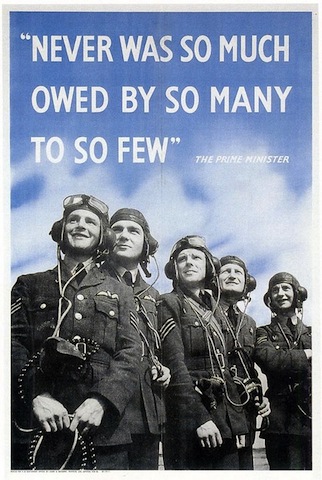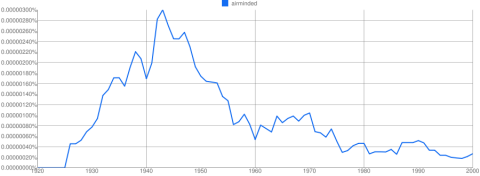So, THATCamp Melbourne is over. It was pretty much as I expected, which is to say it was excellent. I'm not going to write a conference report (you should have been following #thatcamp on Twitter for that!) but two sessions did give me ideas for digital history projects I might like to do. One day. If I get the time.
One came out of the unofficial API Tim Sherratt reverse-engineered for Trove Newspapers. (Why the National Library of Australia won't release an official API is a bit mysterious.) He uses that to scrape Trove to do searches and display results which aren't possible with the interface offered by the NLA, such as plotting the frequency of Australian vs British/Briton. Are there any publicly accessible datasets which I use which could benefit from the same treatment? Yes, there are. The first one I thought of was the Flight archive, which is a great resource burdened with a limited interface. (But it's fantastic that it exists at all: Flightglobal is a commercial operation and they didn't need to open up their back issues like this at all, if they didn't want to.) I think this is easily doable. A second one is much more ambitious: The National Archives catalogue. It's frustrating that you can't do keyword search across their digitised collections; all you can do is search the descriptions in the catalogue, and these are by their nature limited. A scraper would help here. But the problem there is that you can't download documents directly, even when they are free; you have to add to a 'shopping cart', pay £0.00 for it and wait for an email to arrive. Possibly this could be automated; possibly not.
The other idea I had was to use SahulTime (or its eventual successor, possibly called TemporalEarth) to display the British scareship waves. SahulTime is something like Google Earth, but it allows you to map events/documents/people/objects in time as well as space. Matthew Coller, the developer, originally devised it to represent archaeological data on migration into Australia across the ice-age land bridge, but it is just as useful for historical data. So I could use this to show when and where the scareships were seen, showing how the waves started and evolved, with links to the primary sources. SahulTime is also good at displaying uncertainty in time, which is helpful where I have only vague information about when a sighting happened. The same could be done for uncertainty in space, though that's a bit trickier conceptually.
One day... if I get the time...









Comments
Erik Lund, Urban Garlic, Neil Datson, Gavin, Urban Garlic
JDK, Neil Datson, Chris Williams, Neil Datson, Dan, Chris Williams [...]
Brett Holman, JDK, Brett Holman, JDK
Brett Holman, Chris Williams, Brett Holman, Brett Holman, Alan Allport
Airminded · Tuesday, 27 September 1938, Brett Holman, Don Smith, November Fifth
Brett Holman, dr Hamidzeb khan, Brett Holman, Dr.Hamidzeb Khan, Ralph, Brett Holman [...]
Airminded · Perth, Airminded · Not all of me shall die, Don Smith, Brett Holman, Jakob, JDK [...]